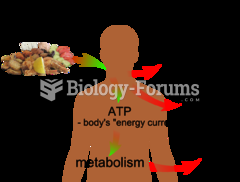Answer to Question 1
ANS: According to Maslow's theory, self-actualizers differ from others in terms of their basic motivation. Maslow proposed a distinct type of motivation for self-actualizers which he called metamotivation (sometimes called B-motivation or Being). The prefix meta means after or beyond. Metamotivation, then, indicates that it goes beyond psychologys traditional idea of motivation.
Metamotivation implies a condition in which motivation, as we know it, plays no role. Self-actualizers are not motivated to strive for a particular goal. Instead, they are said to be developing from within. Maslow described the motivation of people who are not self-actualizers as a condition of D-motivation or Deficiency. D-motivation involves striving for something specific to make up for something that is lacking within us. For example, failure to eat produces a deficiency in the body that we feel as discomfort. This feeling motivates us to take some action to reduce the resulting tension.
Self-actualizers are concerned with fulfilling their potential and with knowing and understanding their environment. In their state of metamotivation, they are not seeking to reduce tension, satisfy a deficiency, or strive for a specific object. Their goal is to enrich their lives by acting to increase tension so as to experience a variety of stimulating and challenging events. Because their lower-order deficiency needs have been met, self-actualizers function at a level beyond striving for specific goal objects to satisfy a deficit. Thus, they are in a state of being, spontaneously, naturally, and joyfully expressing their full humanity.
Having explained that self-actualizers are thus, in a sense, unmotivated, Maslow proposed a list of metaneeds toward which self-actualizers evolve. Metaneeds are states of beingsuch as goodness, uniqueness, and perfectionrather than specific goal objects. Failure to satisfy metaneeds is harmful and produces a kind of metapathology, which thwarts the full development of the personality. Metapathology prevents self-actualizers from expressing, using, and fulfilling their potential. They may come to feel helpless and depressed, unable to pinpoint a source for these feelings or identify a goal that might alleviate the distress.
Answer to Question 2
ANS: Maslow proposed a hierarchy of five innate needs that activate and direct human behavior. They are the physiological, safety, belongingness and love, esteem, and self-actualization needs. The needs are arranged in order from strongest at the bottom to the weakest at the top. Lower needs must be at least partially satisfied before higher needs become influential. We are not driven by all the needs at the same time. In general, only one need will dominate our personality at any one point in time. Which one it will be depends on which of the others have been satisfied. The order of the needs can be changed.
Maslow later proposed a second set of innate needs, the cognitive needsto know and to understand, which exist outside the hierarchy we have described. The need to know is stronger than the need to understand, and must therefore be at least partially satisfied before the need to understand can emerge. The hierarchy of these two needs overlaps the original five-need hierarchy. Knowing and understandingessent ially, finding meaning in our environmentare basic to interacting with that environment in an emotionally healthy, mature way to satisfy physiological, safety, belongingness and love, esteem, and self-actualization needs.







